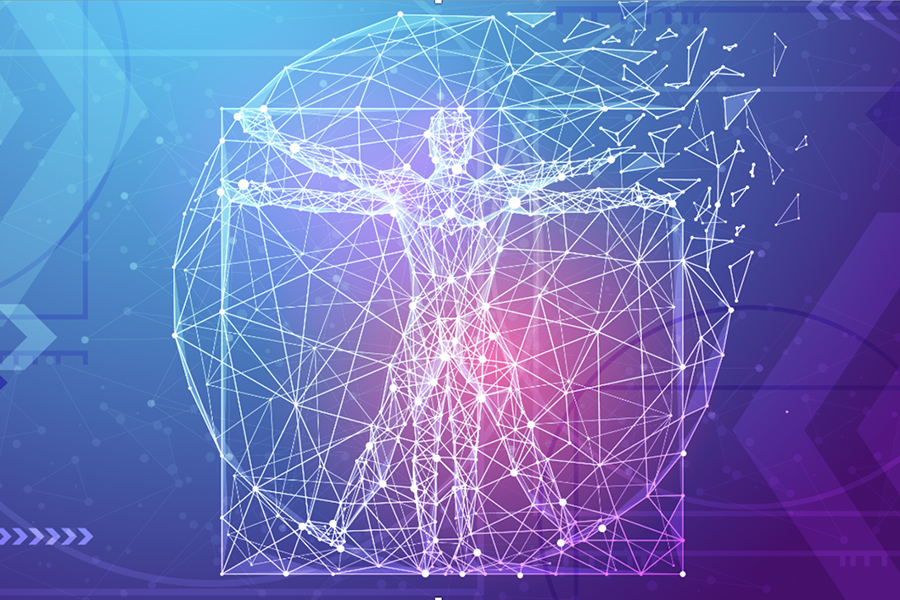Much of the Davos 2020 community this week will be focused on the looming global climate crisis. Delegates will be frustrated about our seeming tendency to neglect a catastrophic problem that confronts us while making “much ado about nothing” in relative terms.
But this is connected to a still larger issue that is illustrated by the march of the successive Industrial Revolutions that the modern world has witnessed. Each has intensified the risks of de-humanizing economic progress, to the point that we now face an existential threat in both environmental and humanitarian terms.
The advance of the 4th Industrial Revolution (robotics, AI, AR, VR, and the like) has produced a developing scenario in which the momentum of technology and commerce too often eclipses the service of humanity. This problem has become so acute that some of the lead innovators in the 4th Industrial Revolution have begun to relinquish some of their intellectual property into the public domain so that they will not be responsible for the possible effects of it. Indeed, several Captains of the 4th Revolution surmise that some of the new technologies can be an Orwellian “enemy of the people.”
Meanwhile, our economic engines continue to roar as the world’s population grows, and the ideals of human flourishing are left wanting.
In many ways, we are unprepared to meet the challenges ahead. According to a recent World Economic Forum report, for example, 65% of children entering the school system today will end up in careers that don’t exist yet, and much of this will be attributable to the rapid advancements of the 4th Industrial Revolution.
Of course, there is good and bad in any realistic view of our shared future. We want to focus here on five “Beacons of Hope” that can be seen and are worth noting.
The leading light, what we will call the first and signal Beacon to all the others, is the rise of the 5th Industrial Revolution. In contrast to trends in the 4th Revolution toward de-humanization, technology and innovation best practices are being bent back toward the service of humanity by the champions of the 5th.

Forbes contributor Lawrence Wintermeyer highlighted this recently, concerning the impact of the 4th Industrial Revolution on the fintech markets. “Most of the conferences I attend focus on ‘the next big tech thing’ and what it can do,” Wintermeyer observed, “often to the exclusion of the utility and impact the technology will have on society. I am most often asked what the next ‘smart money’ tech trend is in fintech. I am now happy to report it is not blockchain, bitcoin, or AI. It is humanity.”
In the 5th Industrial Revolution, humans and machines will dance together, metaphorically. This year at Davos, an event sponsored by Forbes, MIT, and Tata promoted the theme: “Blockchain + AI + Humans = Magic!” This equation seems impossible to some, but it can (and will) prove correct. AI will help increase human labor productivity. Blockchain will help give access to banking (and intangible forms of capital connected to a person’s “quiddity”) to the unbanked through ventures like Celsius. Robots will help humans align ROI with purpose. But all this will require intentionality, and moral clarity.
This leads to the second Beacon, which is an unprecedented connection of business to purpose. Ironically, at the moment that capitalism is more derided than ever in many circles, business is emerging as the world’s most powerful and active force for doing good. Consumers are demanding it, and many companies are responding – and sustainability-minded brands are winning market share!
Funding for businesses is now being directed, with intentionality, to businesses that are embracing purpose and shared outcomes relating to human flourishing. Larry Fink, CEO of investment titan Blackrock, wrote an Open Letter to CEOs that reflects a new emerging standard in this regard. In that widely-circulated document, he wrote: “Purpose is not the sole pursuit of profits but the animating force for achieving them. Profits are in no way inconsistent with purpose – in fact, profits and purpose are inextricably linked.” These sentiments (and the executives aligned with them) are on the rise.
The third Beacon of Hope is the increasing prominence of the United Nations Sustainable Development Goals (referred to as “SDGs” or the “Global Goals”). The SDGs provide history’s first universal matrix to achieve a flourishing future. Adopted by the heads of governments from 193 UN member states, the SDG framework addresses the vital physical facets of life in our global village – social, environmental, and economic.

According to the United Nations Conference on Trade and Development (UNCTAD) World Investment Report 2014, an estimated annual investment of US $3.9 trillion would be required to achieve the SDGs. Currently, this translates to an estimated $2.5 trillion gap per year to finance the targets of the global goals. But the good news is that businesses are rallying, making manifest the focus of SDG #17, which is the call for businesses, governments, impact investors, donors, and NGOs to partner together in unprecedented ways to achieve the Global Goals. This is evident in advancing Public-Private Partnerships (called “PPPs”) that are gaining momentum as a model for sustainable impact initiatives. Helpful frameworks for leadership are widely adopted by various sectors, like this one in the impact investing community:

One obvious way to fund the gap is by targeting private capital in a manner that requires businesses to be SDG-aligned. But beyond investing, companies will need to think outside of the box to engage more than $2 trillion in brand marketing budgets to help advance the common good.
One example of this gaining global attention is the “Good Exchange” model. A Good Exchange is a marketing framework proposed more than a decade ago by which a brand engages its consumers with a content activation that unlocks a donation to a cause that matters to both the brand and the consumer. The consumers become the media beacons for brand/cause-connected content so that a growing portion of brand funds can flow to cause, rather than to their media intermediaries.
These kinds of “omniwin” models, when supported by clear and compelling case study data, are changing the traditional marketing mix at many companies, and producing unprecedented public-private partnership opportunities.
The fourth Beacon sits at the center of the SDG framework as the fulcrum to lifting all the others: SDG #5 is about the empowerment of women and girls worldwide. It has been said that there is no hope for achieving the global goals unless SDG 5 is central to the agenda. If women and girls are empowered to lead unprecedented campaigns for human flourishing, all of the other SDGs will rise.
Open platform movements like The SDG5 Global Alliance have been created to promote inspirational and aspirational examples of women who are leading the way in getting things done. The 5th Industrial Revolution will be powered by SDG #5: the innate instincts and the intuitively unique strategic voice of women in leadership. And businesses, through best practices in hiring and development, and other kinds of support will be essential facilitators.
The fifth Beacon of Hope is that these kinds of cross-sector, SDG-aligned movements are going global, and becoming increasingly democratized. SDG-aligned leadership is emerging in countries like India, which is experiencing a historically unparalleled demographic dividend of young people rising who have a keen desire for a better world. Forward-thinking companies are taking notice. CPG leader RB’s Harpic brand, for example, is helping mobilize a multi-brand campaign to “conserve and respect water” in one of India’s largest PPP campaigns in history. Joining in are partners like 100-year-old Tata Trusts, the philanthropic arm of the powerful Tata conglomerate in India. “Mission Paani” now represents a game-changing response to the water and sanitation crisis in India through an unprecedented public-private partnership model.
Likewise, new crowd-funding platforms are reflecting the global and increasingly democratized nature of the push toward the global goals. Grant competitions are moving beyond traditional “black box” judging panels, pushing decision-making between vetted applicants to an emerging class of micro-donors. It’s an encouraging trend.
Leading executives more fully recognize that a company’s stakeholders are more than just its shareholders: they are also employees, customers – and, more broadly, the people and planet impacted by our work in the world.
The challenges are clear. But so is the opportunity. We can create a new socio-economic era that closes historical gaps in last-mile inclusion and engages the “bottom billion” in creating quantum leaps for humanity, and a better planet.
The world needs a 5th Industrial Revolution to flower like a new Renaissance Age. It will be marked by unprecedented creativity and a sense of shared common purpose, as we work together to bend progress and profits toward purpose and inclusivity.
Are you a part of it?
By World Economic Forum Global Shaper Pratik Gauri, with Jim Van Eerden. Pratik is the Founder and Chairman of India Needs You (INY) and India President of 5th Element Group. He has also held executive positions at TATA Group. Through INY, he has hosted 15+ impact gatherings around the topics of entrepreneurship, law and public policy and has equipped more than 20,000 young adults with a leadership toolkit. He has been recognized as a World Economic Forum Global Shaper, an Al Gore Climate Leader, Startup Leadership Program Fellow, Global Action on Poverty Changemaker and Asian Youth Inspiration.




































